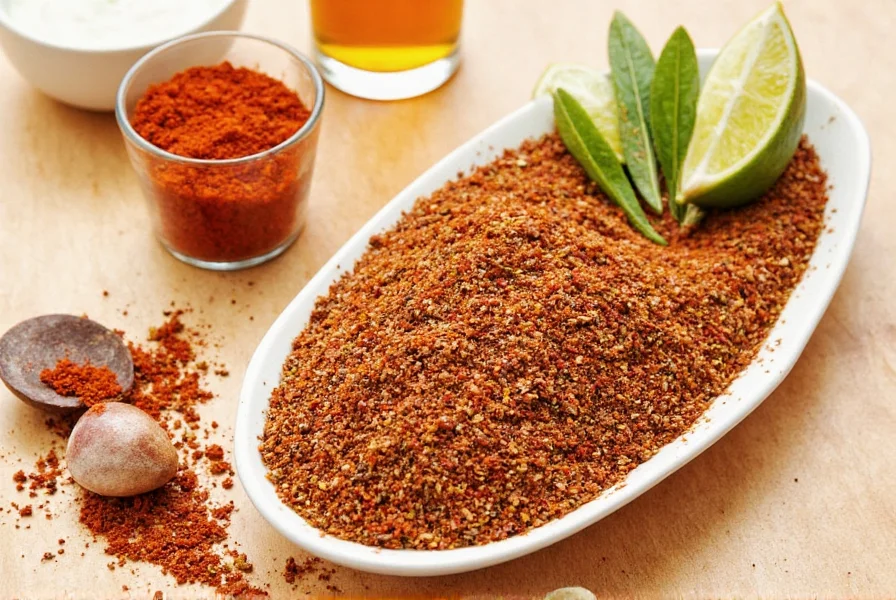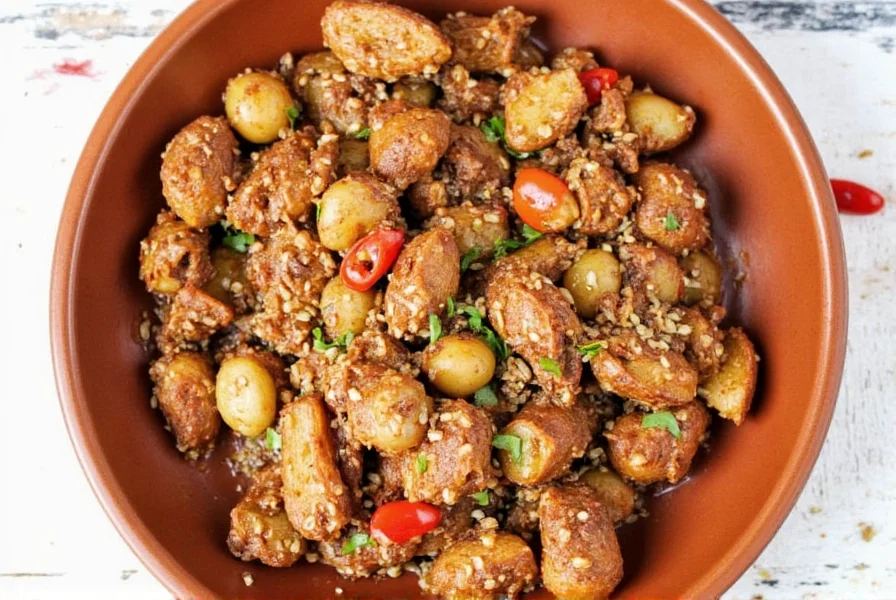Table of Contents
- Introduction to Adobo Puerto Rico
- The Origin and Cultural Significance
- What Makes Adobo Puerto Rico Unique?
- Creative Ways to Use Adobo in Your Kitchen
- Buying Guide: Choosing the Best Adobo Blend
- How to Make Homemade Adobo Puerto Rico
- Comparison Table: Store-Bought vs. Homemade Adobo
- Frequently Asked Questions About Adobo
- Conclusion: Spice Up Your Life with Adobo!
Introduction to Adobo Puerto Rico
If you’ve ever bitten into a perfectly seasoned piece of grilled chicken or tasted the depth of flavor in a rich, aromatic stew and wondered what magical ingredient was responsible, chances are it was Adobo Puerto Rico. This iconic seasoning blend is the unsung hero of Caribbean cuisine, packing bold flavors that transform even the simplest dishes into something extraordinary.
But Adobo isn’t just a spice—it’s a culinary tradition, a flavor identity, and a cultural touchstone for Puerto Rican families and chefs alike. Whether you're a professional cook looking to add authenticity to your menu or a home enthusiast eager to explore global flavors, understanding Adobo Puerto Rico is like unlocking a new dimension of taste.
The Origin and Cultural Significance
Adobo has deep roots that trace back long before the arrival of Spanish colonizers in the Caribbean. The word "adobo" comes from the Spanish term adobar, which means “to marinate” or “to season.” However, its use predates European influence, as indigenous Taíno people used local herbs and salt to preserve and flavor their food.
Over time, African, Spanish, and indigenous influences blended together to create the modern-day version of Adobo Puerto Rico. Today, it’s a staple in households across the island and beyond, often found in every kitchen cabinet—right next to salt and pepper. It’s more than a seasoning; it’s a symbol of heritage, pride, and love on the plate.
What Makes Adobo Puerto Rico Unique?
You might be thinking: how different can one seasoning really be? But Adobo Puerto Rico stands out because of its unique balance of savory, garlicky, earthy, and slightly sweet notes. Let’s break down the typical ingredients:
- Garlic powder – adds a robust, aromatic base.
- Onion powder – brings sweetness and umami.
- Black pepper – adds warmth and mild heat.
- Oregano (usually dried) – contributes a rustic, woodsy note.
- Coriander – introduces a citrusy, floral edge.
- Annatto (optional but common) – provides color and an earthy undertone.
- Salt – enhances all other flavors.
Some blends also include sugar or paprika, depending on the brand or family recipe. The beauty of Adobo lies in its versatility and simplicity—it enhances without overpowering, making it perfect for meats, seafood, vegetables, and even rice dishes.
Creative Ways to Use Adobo in Your Kitchen
While Adobo is most famously used as a marinade for meats like chicken, pork, and beef, there's no reason to stop there. Here are some delicious ways to incorporate this powerhouse seasoning into your daily cooking:
- Rub for Grilled Veggies: Toss zucchini, bell peppers, or eggplant in olive oil and sprinkle with Adobo before grilling for a smoky, flavorful side dish.
- Popcorn Upgrade: Mix melted butter with a dash of Adobo and drizzle over freshly popped popcorn for a salty, garlicky snack.
- Seasoned Oil: Combine olive oil with Adobo and let it infuse overnight. Use it as a dip for bread or drizzle over soups and stews.
- Egg Enhancer: Add a pinch to scrambled eggs or omelets for a quick breakfast boost.
- Bean Boost: Sprinkle Adobo into black beans or pinto beans while they simmer for added depth.

Buying Guide: Choosing the Best Adobo Blend
With so many brands claiming to offer the “authentic” Adobo Puerto Rico experience, it can be tough to know which one to choose. Here’s a breakdown of what to look for when selecting a high-quality blend:
| Feature | Description |
|---|---|
| Natural Ingredients | Avoid artificial additives. Look for garlic, onion, oregano, coriander, and salt as main components. |
| No MSG | Purists prefer blends without monosodium glutamate for a cleaner flavor profile. |
| Color & Texture | Should have a uniform texture and vibrant color—avoid clumps or faded hues. |
| Packaging | Airtight containers or resealable pouches help maintain freshness longer. |
| Reputation | Stick with trusted brands like Goya, Sazón Morales, or homemade recipes passed through generations. |

Top Recommended Brands
- Goya Adobo with Pepper – Affordable, widely available, and perfect for everyday cooking.
- Mrs. Dash Puerto Rican Style – Salt-free alternative ideal for low-sodium diets.
- Loisa Adobo Seasoning – Ethically sourced and known for clean ingredients.
- Homemade Blends – Customizable and deeply personal, great for those who love to tweak flavors.
How to Make Homemade Adobo Puerto Rico
Want to take your spice game to the next level? Making your own Adobo allows full control over the ingredients and intensity. Here’s a simple yet authentic recipe:
Ingredients:
- 2 tbsp garlic powder
- 2 tbsp onion powder
- 1 tbsp ground black pepper
- 1 tbsp dried oregano
- 1 tsp ground coriander
- 1 tsp annatto powder (optional for color)
- 1 tbsp sea salt
- 1 tsp brown sugar (optional for sweetness)
Instructions:
- Mix all ingredients thoroughly in a bowl.
- Store in an airtight container away from direct sunlight.
- Use within 3–6 months for best flavor.
Tips: For a fresh twist, grind whole spices like peppercorns and coriander seeds before mixing with the powders. You’ll notice a deeper aroma and more complex taste.
Comparison Table: Store-Bought vs. Homemade Adobo
| Feature | Store-Bought | Homemade |
|---|---|---|
| Convenience | Instant access, no prep needed | Requires planning and time |
| Customization | Limited to brand formulations | Fully customizable |
| Flavor Depth | Can be flat or overly salty | Fresher and more complex |
| Cost | Cheap per use | More expensive upfront, but economical long-term |
| Shelf Life | Longer due to preservatives | Shorter, but fresher tasting |
Frequently Asked Questions About Adobo
Is Adobo the same as Sazón?
No! While both are popular Puerto Rican seasonings, Sazón typically includes culantro, annatto, and sometimes MSG, giving it a brighter, more herbaceous flavor compared to Adobo’s garlic-forward profile.
Can I substitute Adobo if I don’t have any?
You can make a basic substitute using garlic powder, onion powder, oregano, and black pepper mixed with salt. However, it won’t quite match the balanced flavor of true Adobo.
Is Adobo spicy?
Not traditionally. Adobo delivers bold, savory flavor rather than heat. If you want a kick, consider adding crushed red pepper flakes or cayenne to your dish separately.
Can vegetarians use Adobo?
Absolutely! Adobo is naturally vegan and works beautifully on tofu, roasted cauliflower, lentils, or any plant-based protein.
Conclusion: Spice Up Your Life with Adobo!
Adobo Puerto Rico is more than a seasoning—it’s a passport to flavor, a bridge between cultures, and a way to connect with generations of cooks who’ve perfected the art of layering taste. Whether you’re sprinkling it on grilled chicken, stirring it into soups, or crafting your own custom blend at home, Adobo brings joy to every bite.
So go ahead—grab a shaker, embrace the legacy, and let Adobo become your new kitchen essential. After all, life’s too short for bland food, and Adobo makes everything better.










 浙公网安备
33010002000092号
浙公网安备
33010002000092号 浙B2-20120091-4
浙B2-20120091-4